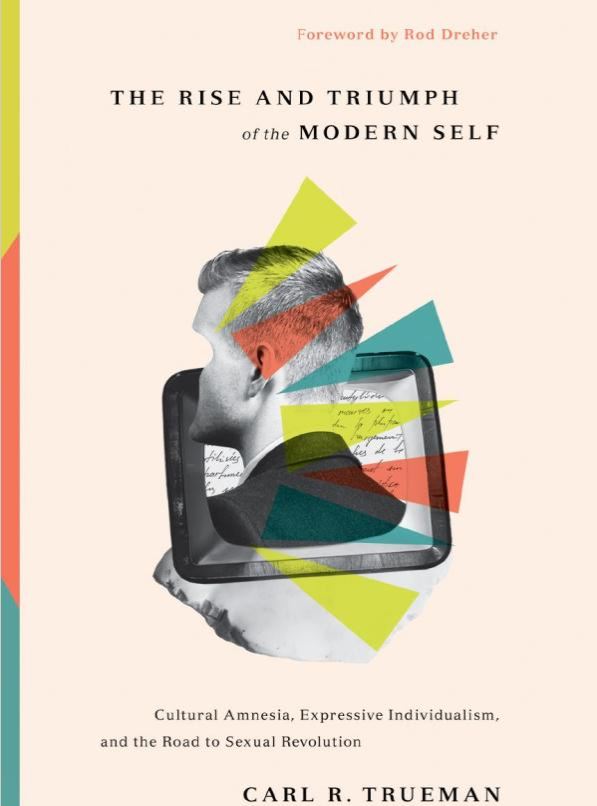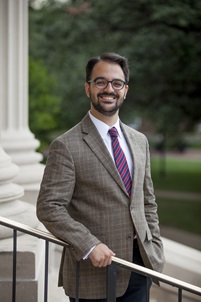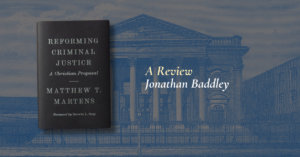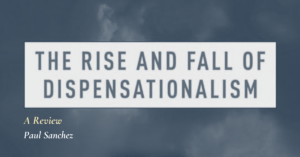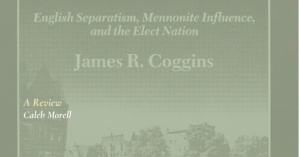Trueman, Carl R. The Rise and Triumph of the Modern Self: Cultural Amnesia, Expressive Individualism, and the Road to Sexual Revolution. Wheaton, Illinois: Crossway, 2020. 425 pages. Hardcover. 978–1-4335–5633–3. $34.99.
Carl Trueman, Professor of Biblical and Religious Studies at Grove City College, has written a book that I am surprised has not yet been written. For some time, authors like Charles Taylor and Alasdair MacIntyre (by now household names) have been providing detailed accounts of what they call “modernity”—the time in which we currently live—along with all of the metaphysical, moral and theological traits it includes or excludes. There are now critiques of modernity in various shades, including its views of money, politics and the like. Curiously missing, though, was an account and critique of modernity’s approach to sex, gender and sexuality. Trueman’s new book remedies just this; it is an account of the development of the characteristics of modernity he argues have made contemporary approaches to sex and gender possible and plausible. His central argument is that these approaches depend upon foundational shifts regarding what it means to be a self, shifts that are traceable to distinct figures in history and analyzable according to a certain framework.
The book is divided into four parts: part one details his framework, parts two and three consist of his historical analysis, part four makes the case that what we see today is the triumph of what developed in parts two and three. Central to part one are three figures: Charles Taylor, Philip Rieff and Alasdair MacIntyre. Trueman adopts Taylor’s view that in modernity reality is not something considered as a given but as something manipulable by our wills and desires, all of which demand recognition from others in order to be authentic (41; 62-3). This parallels the central insight he derives from Rieff, namely, that “psychological categories and an inward focus are the hallmarks of being a modern person” (46). A concomitant aspect of understanding humanity in primarily psychological terms is that notions of a sacred order are abandoned (77, 82). As a result, to possess an authentic human identity in modernity is not to conform to a broader plan or design, but to be true to whatever psychological categories with which we ourselves identify, for the world is conformable to our minds and our culture must recognize its identifications as genuine. This enables the proliferation of what Rieff calls “deathworks,” or actions and identities that are “an attack on established cultural art forms [and other cultural givens] designed to undo the deeper moral structure of society” (96). MacIntyre provides the metaethical analysis for these phenomena: they operate according to emotivist ethics, making what is good and bad, right and wrong a matter of disgust and delight, not teleology, order or nature (82–83). Taken together, the modern malaise sees human beings as fundamentally psychological creatures who act according to the internal forces that please them most, who live in cultures they demand conform to their inward self and who have no regard for sacred order or final ends. Such is the framework Trueman employs to understand the historical development of modernity’s key figures.
Parts two and three detail the history. The people whose views Trueman examines—who are quite wide-ranging and account for the length of the book—sediment a picture of the self that is primarily psychological, sexual and political. He begins with Jean-Jacques Rousseau, who is one of the earliest proponents of the position that “it is society and relations and conditions that society embodies that decisively shape and…decisively corrupt individuals” (115). Trueman then locates the desire to express oneself in ways free from societal confines in the poetry and prose of Wordsworth, Shelley and Blake (160-1). His read of Nietzsche, Marx and Darwin round off part two, and each of them provides something unique to modernity and establish foundations for further development. “All three in their different ways,” Trueman observes, “provided conceptual justification for rejecting the notion of human nature and thus paved the way for the plausibility of the idea that human beings are plastic creatures with no fixed identity founded on an intrinsic and ineradicable essence” (166). Nietzsche, by pronouncing the death of God, sought to do away with conceptualizations of the world that depended on positing God’s existence for their plausibility, including conceptions of a human nature (174). For his part, Marx took Hegel’s basic insight that history moves according to an intellectual dialectic and transposed it into a struggle regarding the material conditions of the world, a move that “makes human nature a plastic thing, subject to historical change as the economic dynamics of society change” as well as rendering “everything…profoundly political, from the laws of the land to the moral codes by which a society regulates itself to organizations that, on the surface, would not appear to have political significance” (179). Finally, in a shorter treatment of Darwin, Trueman identifies the beginning of the end of teleology (185).
Though Trueman maintains that the figures studied thus far are crucial to understanding modernity as such, their claims are not quite sufficient for diagnosing the particular aspects of modernity that have to do with sexuality. For that, an investigation into the thought of Sigmund Freud is necessary. In Freud, Trueman finds a thinker who maintained that “sex, in terms of sexual desire and sexual fulfillment, is the real key to human existence, to what it means to be human…sex is basically that which constitutes what it means to be human and that which defines the purpose of life” (204, 209). Freud’s contribution, then, is to take the central insights of the previous section and give them a distinctly sexual angle. Before, the self was only a psychological, political and plastic entity, but in Freud the most salient part of the psychology in question is sexual. The result is that sex, politics and uninhibited self-expression are deeply intertwined (221). Their further embroilment continued in the final figures of Trueman’s genealogy, namely, the “New Left,” who took the theories offered by Marx and Freud and sought to combine them. Wilhelm Reich and Herbert Marcuse, among others, applied the sexual focus of Freud to the social struggle of Marx. According to the New Left, oppression is shifted to focus on the well-being of the mind and, Trueman thinks, “once oppression becomes primarily psychological, it also becomes somewhat arbitrary and subjective” (237). There are further details about how this is spelled out in terms of oppression of one class over another (cf. 247), but Trueman’s summary conclusion is helpful to cite:
To follow Rousseau is to make identity psychological. To follow Freud is to make psychology, and thus identity, sexual. To mesh this combination with Marx is to make identity—therefore sex—political. And, at the risk of offering a truism, the politics that is produced thereby has a distinctive character precisely because the reality that it thinks it is addressing is at base a psychological one. To transform society politically, then, one must transform society sexually and psychologically, a point that places psychological categories at the heart of revolutionary political discourse (250).
This is the deposit of modernity regarding sex and gender: psychological understandings of the self, sexual understandings of psychology and political understandings of basic human relations converge to render plausible the features of the culture in which we now live.
Part four attempts to illustrate this point with some contemporary case studies, illustrating how the erotic (chpt. 8), the therapeutic (chpt. 9) and LGBTQI+ identities (chpt. 10) have triumphed. We now live in a world where sex “pervades every aspect of life” (271), demonstrated by surrealist art and the accessibility of graphic pornography, which reveal how the body no longer matters to sexuality (297). The triumph of the therapeutic is demonstrated in Supreme Court rulings validating the ability of a human being to choose what they want to be (303), Peter Singer’s denial of human exceptionalism (319), the outrage emerging on college campuses regarding controversial speakers (330) and in the transformation of university curricula (332). Finally, Trueman maintains that behind the LGBTQI+ movement (which he acknowledges is actually quite diverse and perhaps not always internally consistent) is the expressive individualism we might expect from modernity (353). Finally, in his more theological prologue, Trueman exhorts Christians today to see our world in light of the developments of modernity, pointing to shifts in sexual morality, gay marriage, trans*, the decline of religious freedom as phenomena to which the church needs to respond. The content of that response requires reflection on the connection between aesthetics and Christianity’s beliefs and practices, a sense of community both as humans and as Christians and a recovery of natural law (402–5).
Trueman’s book is impressive in many ways, and it places a finger on a number of issues on which Christians ought to reflect carefully, particularly the importance of recovering a notion of human nature and the worth we attach to sexual categories. Nevertheless, it seems to me that there are some significant shortcomings preventing the book from accomplishing what it set out to do. First regards the type of argument it employs. Historical arguments, especially genealogical arguments, must be extremely careful about establishing claims of causation, something Trueman himself has maintained in his excellent book on historical methodology. Yet, though he contends that the historical developments he traces are somehow connected to contemporary phenomena in sexual ethics, he neither clearly states their causal relationship nor provides sufficient evidence to prove them. Take an example: on 206, he argues that Freud’s attempt to make sexual desire fundamental to children is related to today’s views on sex education, gender dysphoria in children and the early prescription of birth control. But what is the relation? Did Freud’s views cause these phenomena? Or is there a complex chain of historical events beginning with Freud that led directly to these phenomena? Or did that chain of events make these phenomena more probable? Or is it that Freud’s views resemble contemporary phenomena without causing them? Or perhaps Freud’s views provide warrant for today’s views, even if he himself could not have foreseen them? These are remarkably different claims, but Trueman does not attempt to differentiate them, nor say for which he advocates. He recognizes that most modern people have not themselves read Freud or Marx, but he is usually content simply to say that it is “obvious” (i.e., 240) that their views account for what we see today. But disambiguating the claims makes clear that the historical relation in question is far from obvious. Without clarifying the connection and providing sufficient evidence, the argument merely gestures at and suggests its conclusions without establishing them.
Along with ambiguity surrounding the claims of historical causation one also finds some significant historical inaccuracies. Trueman seldomly consults secondary literature regarding the figures he investigates and shows little awareness of the debates surrounding their interpretation. For instance, in his section on Simone de Beauvoir (255-260), he asserts that Beauvoir holds that what it is to be a woman is “to feel that one is a woman” (257) and that oppression is primarily a psychological category. But none of these are positions to which Beauvoir actually assented, as the most recent secondary literature displays (i.e., Kate Kirkpatrick’s Becoming Beauvoir). There is considerable debate about whether Beauvoir even held to the sex/gender distinction. She also maintained that to be a woman was not a matter a feeling or psychology, but a question of their preclusion from freely engaging in real-life projects that made life meaningful, and these are not the same. Beauvoir’s views may be false, but Trueman shows greater concern with fitting her into the narrative than with representing her thought accurately. Similar things can be said of his assertion that at the heart of the sex/gender distinction is a commitment to “denying the authority of the physical body and its significance for personal identity” (260); there is no evidence to support this claim and no recognition that there are those who affirm that the sex/gender distinction has value primarily for specifying the importance of the body and those who deny it in order to deny the significance of the body (i.e., Judith Butler). These misrepresentations, along with the occasional hyperbole (i.e., sex pervading “every aspect of life”), cast into doubt the history he presents.
The broader issue of fit within the narrative raises a further point of contention. The identifying traits requisite for a figure to contribute to the development of modernity are poorly defined, enabling Trueman to find examples a bit too easily and predictably. The notion of a “psychologized” self, for instance, is attributable both to Freud and to a Supreme Court justice, and one would be forgiven for concluding that any account that prioritizes mental states in defining identity counts as a psychological self. But while this allows Trueman to associate these two figures, it proves too much. Augustine also prioritized mental states in identifying a self—faculties like the will, memory and understanding. Would he be included as promoting a psychological self? Nothing in Trueman’s analysis would prevent that from being so, but it would be strange to include Augustine in a narrative about the permissibility of sexual expression! Yet, there is no prima facie reason for not doing so, given the criteria on offer.
Because the conditions for including figures within the narrative of modernity’s malaise are insufficiently defined, Trueman’s selection of examples often appear unwarranted. If the causal connections are opaque, and if the criteria for inclusion within the narrative are too general, then it is hard to discern what guided his choices of examples. Of course, same-sex marriage and bathroom bill debates fit into a fairly recognizable cultural narrative and set of political associations, but repeating a cultural narrative is not the same as giving a historical analysis of modernity. The issue with an approach such as this is that the argument is only compelling to the extent that the reader already agrees with Trueman’s judgments about what is problematic about modernity and its current cultural issues. It would be hard to see it convincing someone not already on board with a particular cultural standpoint.
Suppose we expanded the range of issues surrounding sex and gender that plague modernity to include the widespread prevalence of sexual assault. Trueman briefly mentions the #MeToo movement (i.e., 395), but it is only to show its inconsistency with celebrity culture (and not as a salutary development in society). The omission of sexual assault from the narrative is somewhat surprising because, to the extent that we can secure reliable statistics on it, it is more common than any one LGBTQI+ identity. Intuitively, a narrative about modernity’s problems regarding sexuality must include sexual assault, both within and without the walls of the church. Yet, if we turn to the framework Trueman proffers for aid, we are left empty-handed. The primary issues with modernity’s account of sexuality (from which assault is omitted) are its tendency to allow personal appropriations of sexual orientation and gender identities to dominate, but this would be an awkward and inaccurate account of sexual assault in our contemporary world. It seems to be unable to fit within Trueman’s narrative, despite its ubiquity; therefore it is not included. The history he tells, ultimately, seems selective to the phenomena that situate themselves into a particular set of assumptions regarding what is truly at issue with our culture, while excluding others.
Finally, there is a pastoral worry. Even if the above objections were avoidable, is this the kind of book that would help a pastor shepherd a flock through the complexities of sex and gender faced today? I don’t think it is. Individuals today experiencing gender dysphoria or who are same-sex attracted are not helped if they are assumed to be a part of a movement or a revolution, especially a political one. Some might have political motivations, others may not; it seems unwise to assume one way or another. Pastors are more successful if they pay careful and compassionate attention to the particular story of the individual in question, not automatically placing them within a broader story they may not themselves recognize. Rather, their sensitive listening should help the person find their home in God’s story, that of the gospel. In the end, it does not seem to me that Trueman’s book encourages careful and gentle attention to the individuals who may walk through the doors of any church, especially when it reduces them to their desire for sexual fulfillment (as in 391). The picture is just much more complex than that. Pastors love more effectively when they appreciate the complexity and vulnerability of the people they encounter, taking that complexity and helping them place it within God’s story of redemption. For that we need to listen carefully to individual stories, and genealogical accounts tend to obscure them in favor of cultural critique. Trueman’s book then, while impressive in its endeavor, is ultimately not the kind of book needed for the times in which the church finds itself.
Editors Note: The London Lyceum confesses the 2LCF. If the content of the book rejects the 2LCF at any point, we find reasons for concern and the need for revision. However, it is not the mission of the London Lyceum to always publish work that agrees with our confession of faith. We seek to generate thinking and foster an intellectual culture of charity, curiosity, critical thinking, and cheerful confessionalism.
